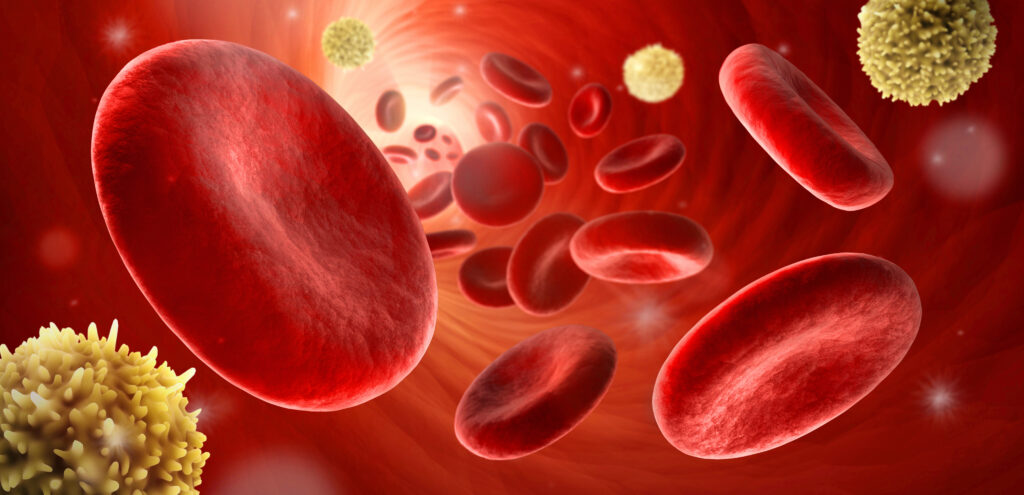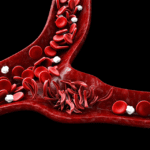Inverse Relationship Between Age and Dose of Blood Thinners for Children
Inverse Relationship Between Age and Dose of Blood Thinners for Children https://pediatricsnationwide.org/wp-content/uploads/2021/03/AdobeStock_104113030-1024x495.jpg 1024 495 Natalie Wilson Natalie Wilson https://pediatricsnationwide.org/wp-content/uploads/2021/06/Natalieheadshot3-2.png- March 02, 2021
- Natalie Wilson

Infants and young children require higher doses of enoxaparin to treat blood clots than do older children.
A blood clot, or thrombosis, isn’t a common problem in children, but it can be a dangerous one. Without proper treatment, a thrombosis can cause a host of long-term problems up to and including permanent damage to patients’ internal organs.
Enoxaparin, a low-molecular-weight heparin (LMWH) with anticoagulative properties, is commonly used to treat pediatric thrombosis when it occurs. After the recommended starting dose of this blood-thinner is administered to a patient, as recommended by the American College of Chest Physicians (ACCP) and the National Comprehensive Cancer Network (NCCN), an anti–factor Xa (AFXa) assay is used to monitor the therapy’s effectiveness in treating the thrombosis. But there may be a problem with this approach.
“While managing enoxaparin dosing, we noticed that it often took a long time for the smaller children to gain therapeutic levels of enoxaparin in the blood,” says Colleen Cloyd, PharmD, an advanced patient care pharmacist at Nationwide Children’s Hospital. She and Emma Wysocki, PharmD, found that this was a trend.
“Small studies have suggested that infants and young children require higher doses of enoxaparin to achieve target AFXa levels compared with adults,” says Amy Dunn, MD, director of hematology and the Hemophilia Treatment Center at Nationwide Children’s Hospital.
If young children require higher amounts of enoxaparin than adults to treat their blood clots, yet their recommended starting dose is the same, it would take much longer for children to be treated effectively.
“We decided to look into this in a more robust sample size to better define this dose-to-age relationship,” says Dr. Cloyd.
Drs. Cloyd, Dunn and Wysocki and their colleagues at Nationwide Children’s conducted a large retrospective study of patients who were treated for thrombosis. The study, published in the Journal of Pediatric Hematology/Oncology, confirmed what smaller, previous studies had suggested: infants and young children do require higher amounts of enoxaparin than adults. In fact, the researchers found a strong inverse relationship between the dose needed and patient age, particularly in the first year of life.
The study included 176 infants and children who were between 60 days and 5 years of age when they began treatment with enoxaparin. Patients who were between 60 days and 7 months old required the highest mean amount of the therapy — 1.73 mg/kg injected subcutaneously, or under the skin rather than into a vein, every 12 hours.
“These results suggest that there is more work to be done in determining the optimal starting dose of enoxaparin in our youngest patients,” says Dr. Wysocki, who served as the study’s lead author and coordinator.
Dr. Wysocki says that the team plans to begin trialing increased dosing in infants while monitoring them closely for adverse events, such as increased bleeding risk, to determine whether therapeutic values can safely be achieved faster. She and the other researchers anticipate their work could potentially influence ACCP guidelines and improve patient outcomes.
“Under current monitoring and dose adjustment guidelines, pediatric patient populations may be at risk of suboptimal dosing,” says Dr. Cloyd, who was the study’s principal investigator. “Our hope is that this research will decrease the number of lab draws and even reduce hospital time for our younger patients by decreasing the time to therapeutic obtainment.”
“If our new dosing works well, we will also consider expanding to a multi-institution trial,” adds Dr. Dunn, who is also a professor of Pediatrics at The Ohio State University.
Children with complex and chronic medical problems are more likely to experience thrombosis. Numerous children in the study developed a thrombosis related to the use of a central venous catheter (CVC). As the use of CVCs increases, this research has significant implications for pediatric oncology patients, patients hospitalized in Pediatric Intensive Care Units (PICUs) and other chronically ill infants and children.
Reference:
Wysocki EL, Kuhn A, Steinbrenner J, Tyrrell L, Abdel-Rasoul M, Dunn A, Cloyd C. Enoxaparin dose requirements to achieve therapeutic low-molecular-weight heparin anti-factor Xa levels in infants and young children. Journal of Pediatric Hematology/Oncology. 2021 Jan 27. [Epub ahead of print]
Image credit: Adobe Stock
About the author
Natalie is a passionate and enthusiastic writer working to highlight the groundbreaking research of the incredible faculty and staff across Nationwide Children's Hospital and the Abigail Wexner Research Institute. Her work at Nationwide Children's marries her past interests and experiences with her passion for helping children thrive and a long-held scientific curiosity that dates back to competing in the Jefferson Lab Science Bowl in middle school. Natalie holds a bachelor’s degree in sociology from Wake Forest University, as well as minors in women's, gender & sexuality studies and interdisciplinary writing. As an undergraduate student, Natalie studied writing and journalism, engaged with anthropological and sociological research with a focus on race and ethnic relations, served as executive editor for the student newspaper, the Old Gold & Black, and gained marketing experience as an intern for a nonprofit entrepreneurial incubator, Winston Starts, as well as by working for Wake Forest University School of Law Office of Communication and Public Relations and its Innocence and Justice Clinic.
-
Natalie Wilsonhttps://pediatricsnationwide.org/author/natalie-wilson/
-
Natalie Wilsonhttps://pediatricsnationwide.org/author/natalie-wilson/
-
Natalie Wilsonhttps://pediatricsnationwide.org/author/natalie-wilson/
-
Natalie Wilsonhttps://pediatricsnationwide.org/author/natalie-wilson/
- Post Tags:
- Hematology/Oncology/BMT
- Pharmacy
- Posted In:
- In Brief










